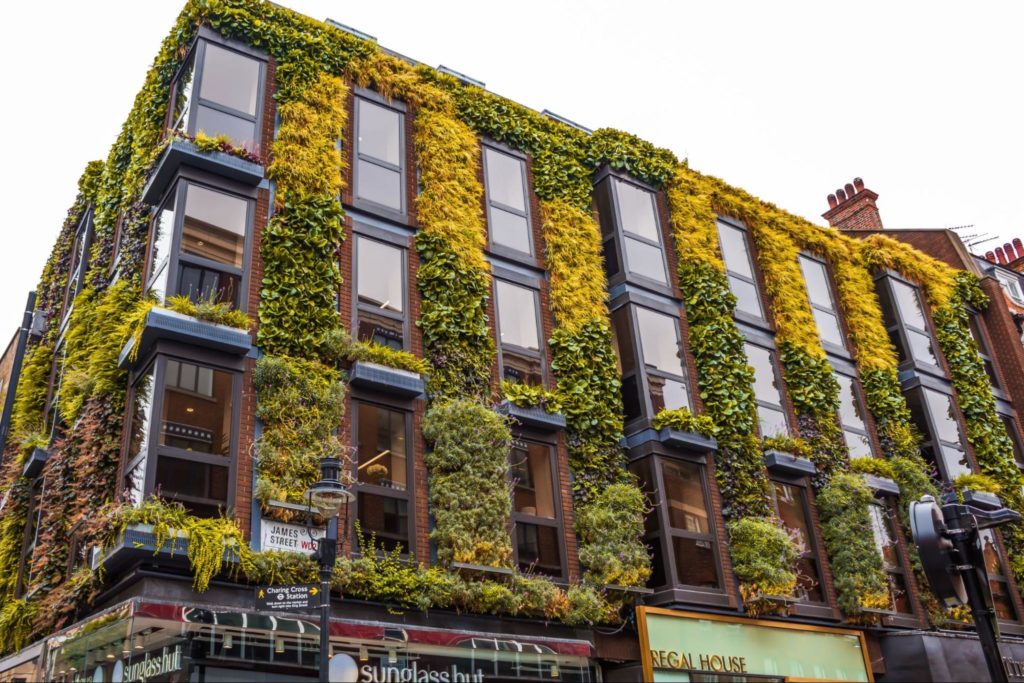
Introduction
The aesthetics and beauty of vertical gardens have gained significant attention in recent years. These innovative and visually striking gardens have become popular focal points in both indoor and outdoor spaces. Vertical gardens offer a diverse range of benefits, from enhancing the visual appeal of a space to improving mental well-being. This article explores the historical background, key concepts, main discussion points, case studies, current trends, challenges, controversies, future outlook, and significance of the aesthetics and beauty of vertical gardens.
Historical Background
Vertical gardens have a rich history that can be traced back to ancient civilizations. The Hanging Gardens of Babylon, one of the Seven Wonders of the Ancient World, serves as an early example of a vertical garden. Throughout history, vertical gardens have evolved and adapted to the changing needs and preferences of society. Technological advancements and design innovations have played a significant role in the development of vertical gardens, from traditional trellises to modern living walls.
Key Concepts and Definitions
Vertical gardens, also known as living walls or green walls, are structures that incorporate plants into vertical surfaces. These gardens can be installed both indoors and outdoors, creating a unique visual and aesthetic experience. Aesthetics play a crucial role in vertical gardens, as they enhance the overall appeal and create a harmonious blend between nature and architecture. The relationship between beauty and vertical gardens is interconnected, as the visual impact of these gardens creates a sense of tranquility and natural beauty.
Main Discussion Points
Point: The Visual Appeal of Vertical Gardens
Vertical gardens are visually appealing due to their use of color, texture, and pattern. The vibrant hues of different plant species combined with the contrasting textures and patterns create a captivating display. The careful selection and arrangement of plants in vertical gardens contribute to their aesthetic value. These visually appealing gardens serve as focal points, attracting attention and creating a sense of wonder.
Point: The Psychological Impact of Vertical Gardens
Nature has a profound impact on human well-being, and vertical gardens provide a dose of nature in urban environments. Research has shown that exposure to green spaces and natural elements can improve mental health, reduce stress, and enhance overall well-being. Vertical gardens offer a therapeutic environment, promoting relaxation and rejuvenation. The presence of greenery in these gardens evokes a sense of tranquility and connection to nature.
Point: The Integration of Vertical Gardens into Architectural Design
Vertical gardens have revolutionized architectural design by seamlessly incorporating nature into built environments. These gardens can be integrated into various structures, ranging from residential buildings to commercial complexes. The impact of vertical gardens on urban landscapes and city planning cannot be understated. They bring nature to urban areas, purify the air, and provide insulation. The integration of vertical gardens into architectural design enhances the overall aesthetics and sustainability of the built environment.
Case Studies or Examples
Numerous successful vertical garden projects exist worldwide. One notable example is the Musée du quai Branly in Paris, designed by Patrick Blanc. The vertical garden covering the museum’s exterior creates a stunning visual display, showcasing the beauty of nature within an urban setting. Another example is the CaixaForum Madrid, where a vertical garden designed by Patrick Blanc has transformed the building’s exterior into a lush greenery-filled canvas.
Current Trends or Developments
In recent years, vertical garden design has embraced several trends. One trend is the incorporation of edible plants into vertical gardens, allowing for sustainable food production in urban areas. Another trend is the use of modular systems, enabling easy installation and maintenance of vertical gardens. Innovations such as automated irrigation systems and vertical garden panels have made it more convenient for individuals to have their own vertical gardens.
Challenges or Controversies
Creating and maintaining vertical gardens can present challenges. Adequate irrigation and drainage systems are crucial to ensure the health and longevity of the plants. Additionally, the selection of appropriate plant species that can thrive in vertical garden conditions can be a challenge. Controversies surrounding the aesthetics of vertical gardens arise from differing viewpoints on the balance between nature and architecture. Some argue that vertical gardens may overshadow the architectural elements, while others believe they enhance the overall beauty and sustainability of a space.
Future Outlook
The future implications of vertical gardens in architecture and design are promising. As urbanization continues to increase, vertical gardens offer an innovative solution to integrate nature into densely populated areas. Advancements in technology and design will likely lead to more efficient and sustainable vertical garden systems. The aesthetics of vertical gardens are expected to evolve, incorporating new plant species, textures, and patterns to create unique and visually stunning displays.
Conclusion
Vertical gardens have emerged as an aesthetically pleasing and beneficial addition to both indoor and outdoor spaces. Their historical background, key concepts, and main discussion points highlight the importance of aesthetics and the positive impact on human well-being. Real-world case studies demonstrate the successful implementation and beauty of vertical gardens. Trends, challenges, and controversies shape the future outlook of vertical gardens, with the potential for advancements in design and sustainable practices. The aesthetics and beauty of vertical gardens not only enhance visual appeal but also foster a deeper connection to nature in our built environments.
References
Blanc, P. (2008). The vertical garden: From nature to the city. W.W. Norton & Company.
Oberndorfer, E., Lundholm, J., Bass, B., Coffman, R. R., Doshi, H., Dunnett, N., … & Rowe, B. (2007). Green roofs as urban ecosystems: Ecological structures, functions, and services. BioScience, 57(10), 823-833.
Preen, R. J., Jensen, R. K., & Graham, B. D. (2013). An overview of living wall technology and its application in urban areas. Landscape and Urban Planning, 109(1), 1-12.
Sullivan, W. C., Kuo, F. E., & DePooter, S. F. (2004). The fruit of urban nature: Vital neighborhood spaces. Environment and Behavior, 36(5), 678-700.